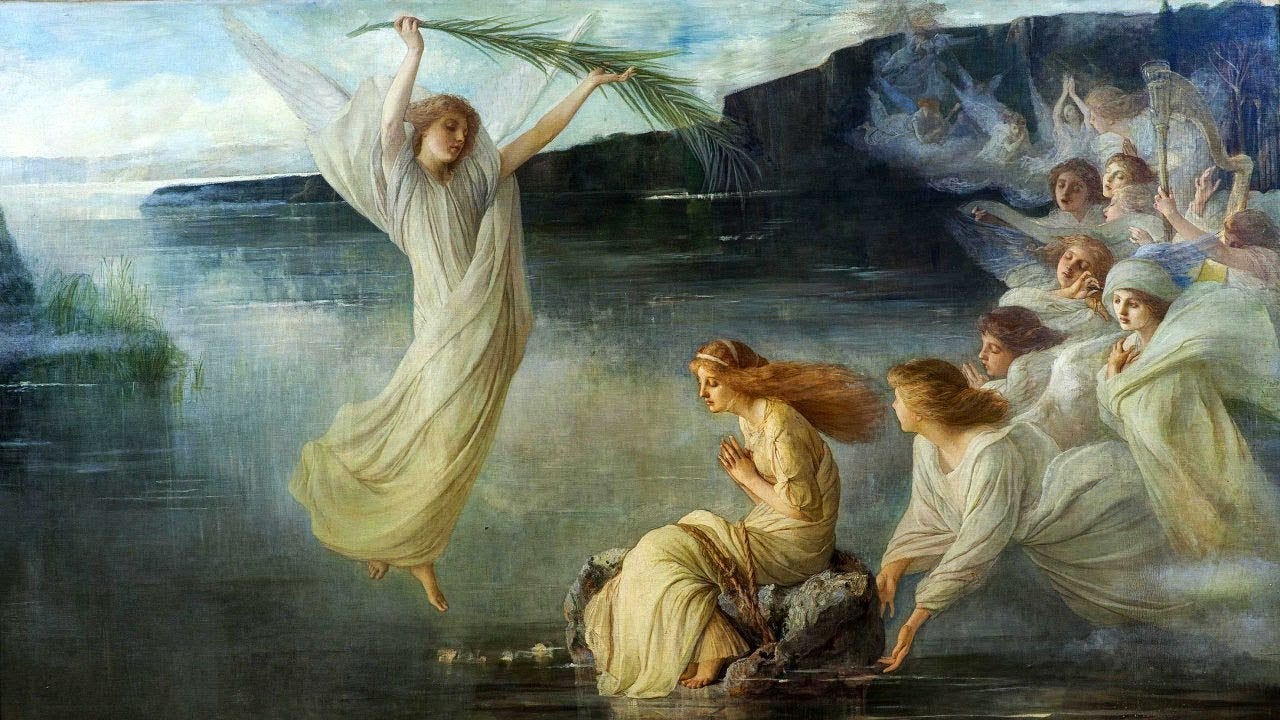How a 10 Year Old Girl, Saint Christina, Changed History
The Miracle of Bolsena, where she is interred, launched the Feast of Corpus Christi in 1263
Today, there are legions of grown men who claim the Catholic Faith but lack the purity of heart and courage of a 10 year old child, Christina of Bolsena. Perhaps her story might inspire some reflection of those men on their current role in New Christendom.
Saint Christina, a 10 year old girl, was born in a town then called Tiro, on the borders of Lake Bolsena, in central Italy. Her father was a Roman nobleman. She took the name Christina because she had been converted to the teachings of Christ. Her father was furious when he heard she had become a Christian. He asked his servants to beat her and throw her into a dungeon but angels came and healed her wounds. Then the Romans took over and Saint Christina was then thrown into a lake with a millstone tied around her neck. Angels again rescued her again.

She was then thrown into a burning furnace for five days where she sang God’s praises, and was left totally unharmed. She refused apostasy before a statue of Apollo and it fell and crashed to the ground, shattering into thousands of pieces.
At this very moment her father died.
Her enemies then cut out her tongue, but miraculously, she kept singing. She was locked in a room with poisonous snakes, survived and at last having been shot through with many arrows and died.
Her relics were interred in the Cathedral of Bolsena, where in 1263 a Eucharistic miracle occurred while a visiting, doubting priest said Mass above her crypt. The miracle was so profound Pope Urban IV asked St Thomas Aquinas to compose the office for the Mass of Corpus Christi and 1 year later made the feast part of the universal Church’s calendar. The following description is from the Eucharistic Miracles website.
In 1263 a German priest, Peter of Prague, stopped at Bolsena while on a pilgrimage to Rome. He is described as being a pious priest, but one who found it difficult to believe that Christ was actually present in the consecrated Host. While celebrating Holy Mass above the tomb of St. Christina (located in the church named for this martyr), he had barely spoken the words of Consecration when blood started to seep from the consecrated Host and trickle over his hands onto the altar and the corporal.
The priest was immediately confused. At first he attempted to hide the blood, but then he interrupted the Mass and asked to be taken to the neighboring city of Orvieto, the city where Pope Ur ban IV was then residing.
The Pope listened to the priest's account and absolved him. He then sent emissaries for an immediate investigation. When all the facts were ascertained, he ordered the Bishop of the diocese to bring to Orvieto the Host and the linen cloth bearing the stains of blood. With archbishops, cardinals and other Church dignitaries in attendance, the Pope met the procession and, amid great pomp, had the relics placed in the cathedral. The linen corporal bearing the spots of blood is still reverently enshrined and exhibited in the Cathedral of Orvieto.
It is said that Pope Urban IV was prompted by this miracle to commission St. Thomas Aquinas to compose the Proper for a Mass and an Office honoring the Holy Eucharist as the Body of Christ. One year after the miracle, in August of 1264, Pope Urban IV introduced the saint's composition, and by means of a papal bull instituted the feast of Corpus Christi.
Saint Christina, Pray for Us!




